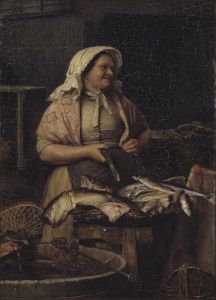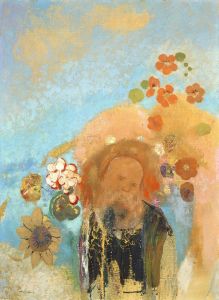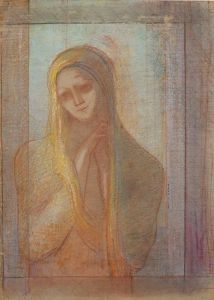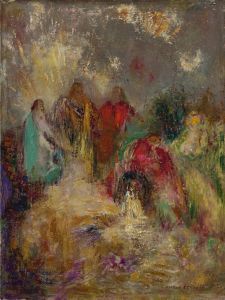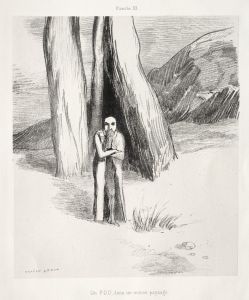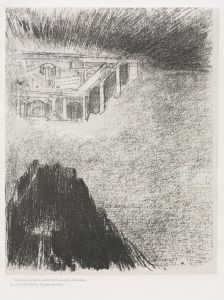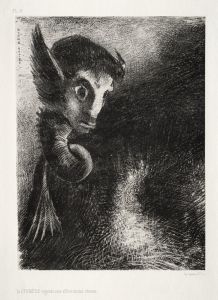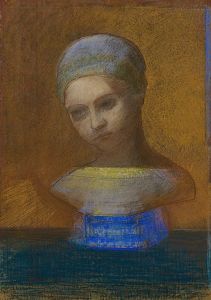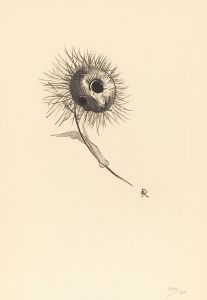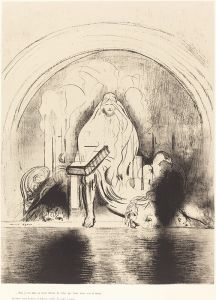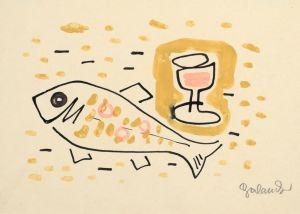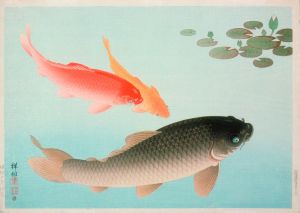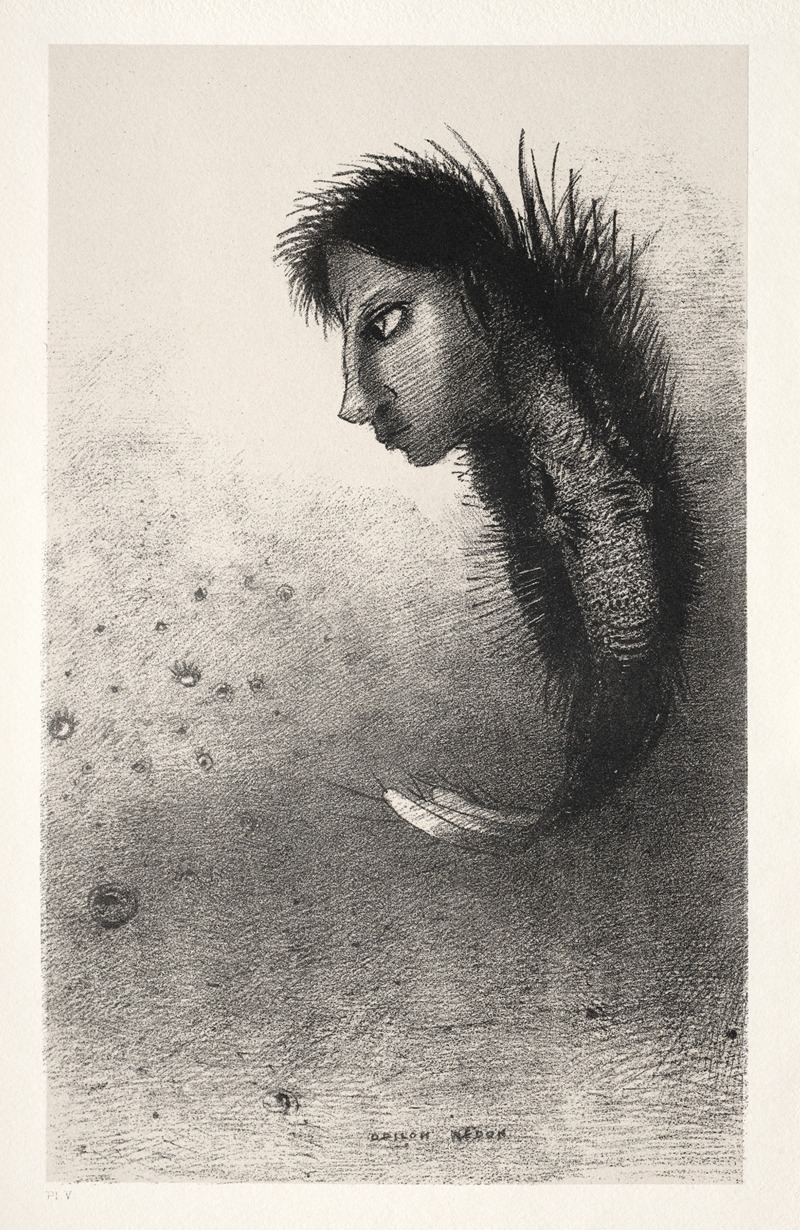
Then There Appears a Singular Being, Having the Head of a Man on the Body of a Fish
A hand-painted replica of Odilon Redon’s masterpiece Then There Appears a Singular Being, Having the Head of a Man on the Body of a Fish, meticulously crafted by professional artists to capture the true essence of the original. Each piece is created with museum-quality canvas and rare mineral pigments, carefully painted by experienced artists with delicate brushstrokes and rich, layered colors to perfectly recreate the texture of the original artwork. Unlike machine-printed reproductions, this hand-painted version brings the painting to life, infused with the artist’s emotions and skill in every stroke. Whether for personal collection or home decoration, it instantly elevates the artistic atmosphere of any space.
Odilon Redon was a French symbolist artist known for his unique and imaginative works that often explored themes of fantasy and the subconscious. One of his intriguing pieces is "Then There Appears a Singular Being, Having the Head of a Man on the Body of a Fish." This artwork is a part of Redon's broader oeuvre that frequently delved into dreamlike and surreal imagery, reflecting his interest in the mystical and the otherworldly.
Redon was born on April 20, 1840, in Bordeaux, France. He initially studied architecture but later turned to painting and drawing, studying under Jean-Léon Gérôme and later under Rodolphe Bresdin, who greatly influenced his early work. Redon's early works were primarily charcoal drawings and lithographs, often referred to as his "noirs," which depicted fantastical and often macabre subjects.
"Then There Appears a Singular Being, Having the Head of a Man on the Body of a Fish" is characteristic of Redon's fascination with hybrid creatures and the blending of human and animal forms. This theme is recurrent in his work, where he often depicted chimerical beings that seem to emerge from dreams or myths. Such imagery aligns with the symbolist movement's interest in exploring the realms of imagination and the unconscious mind.
The piece reflects Redon's interest in symbolism and the exploration of the human psyche. His works often suggest a narrative or evoke a sense of mystery, inviting viewers to interpret the imagery in personal and subjective ways. The combination of a human head with a fish body can be seen as a representation of the duality of human nature, or perhaps a commentary on the connection between humans and the natural world.
Redon's style is marked by a use of soft, muted colors and delicate lines, creating an ethereal quality in his paintings. His use of pastel and oil paints in his later works brought a new vibrancy and depth to his fantastical subjects. This transition from the monochromatic "noirs" to colorful compositions marked a significant evolution in his artistic journey.
Throughout his career, Redon was influenced by literature, music, and philosophy, drawing inspiration from writers such as Edgar Allan Poe and Charles Baudelaire. His works often reflect a synthesis of these influences, creating a visual language that resonates with the symbolist ethos of expressing the ineffable and the mysterious.
Redon's contribution to art extends beyond his own creations; he influenced subsequent generations of artists, including the surrealists, who admired his ability to convey the dreamlike and the uncanny. His work remains a testament to the power of imagination and the exploration of the inner world.
"Then There Appears a Singular Being, Having the Head of a Man on the Body of a Fish" exemplifies Redon's unique vision and his ability to create images that transcend the ordinary, inviting viewers into a realm of wonder and introspection. His legacy as a pioneer of symbolist art continues to be celebrated for its depth, creativity, and enduring impact on the art world.





